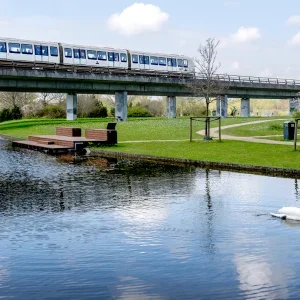A ground collapse occurred early in the morning of 6 June 2003, affecting one of the two TBM-excavated tunnels in the north end of the Guadarrama tunnels, close to Segovia in Spain. No-one was injured.
The affected zone was immediately backfilled and ground stabilisation treatment began after the backfill completion.
The collapse was 8m diameter in its widest part (the upper part) and about 8m in depth. It developed from the excavation front, as the 9.5m diameter Herrenknecht hard rock TBM machine was performing a slight over-excavation in order to reduce convergence movements in a zone where the tunnel crown is only 17m from the surface.
It is claimed that the possibility of facing such ground instability was forecast, and the contractors were forewarned, having been issued with the precise location of each fault sector.
The client told T&TI that the incident does not affect in any way the works’ timing or costs. Tunnel excavation would restart at normal production rates after ensuring that ground treatment was successful. TBM maintenance operations were also carried out during the stop.
A source close to the project was confident that the collapse would not delay the project for long, and said that it would be “weeks rather than months” before the machine was moving again.
Once the ground treatment is completed, a detailed environmental rehabilitation will be applied to the affected zone.
The 28.3km long twin-bore Guadarrama rail tunnel was discussed in depth in the July 2003 issue of T&TI. Two 9.5m diameter Herrenknecht hard rock TBMs, and two 9.5m diameter Wirth/NFM hard rock TBMs are boring the tunnel from both ends.







